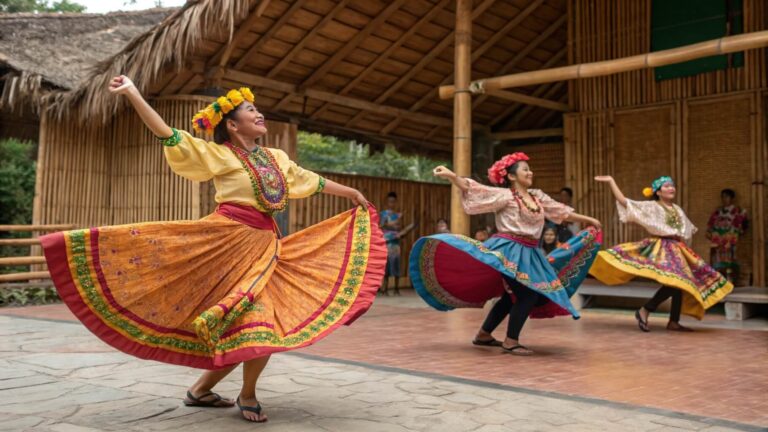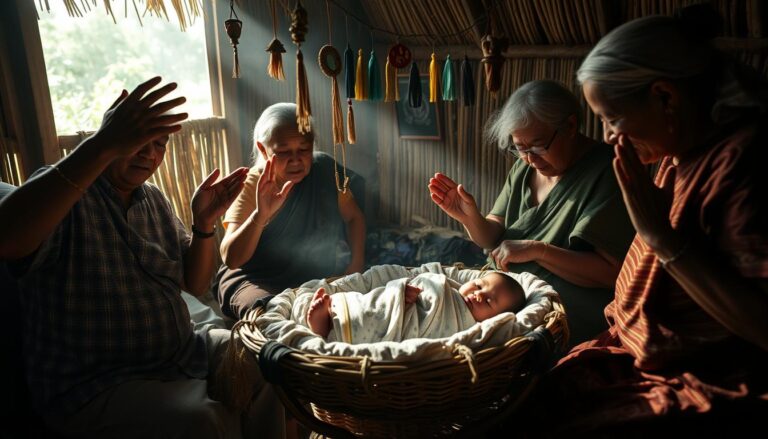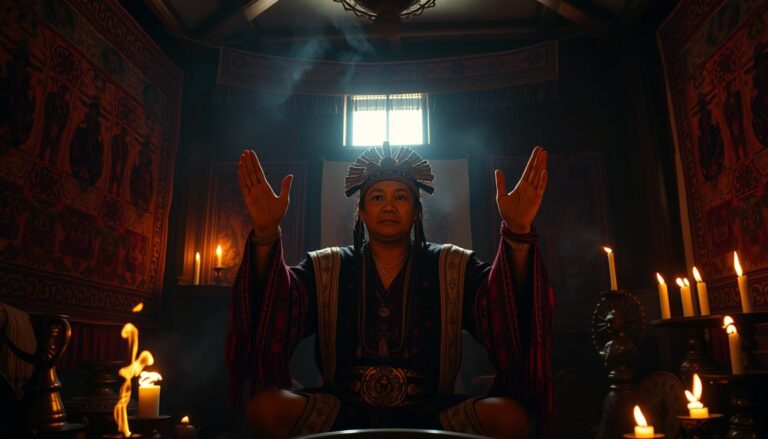Extended Family Dynamics in Modern Filipino Homes
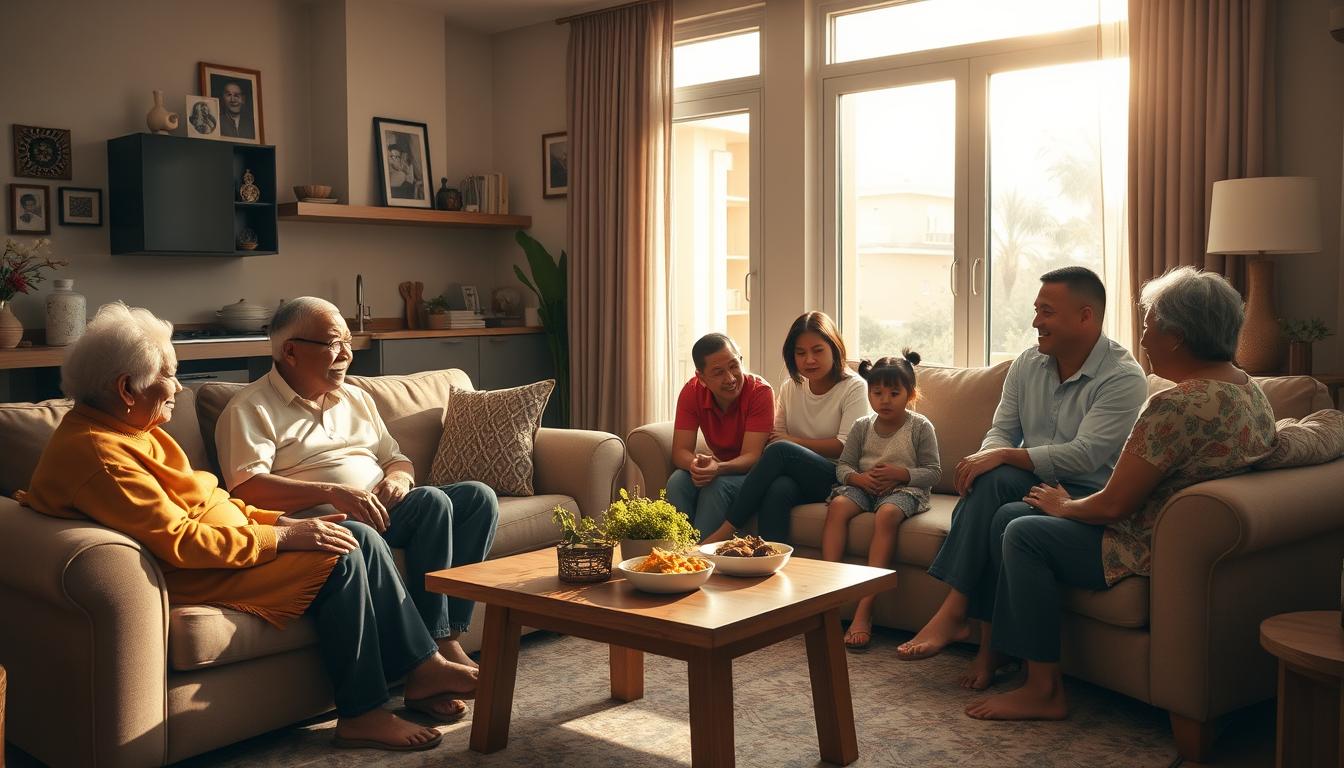
In the Philippines, households often stretch far beyond parents and children. Relatives like grandparents, aunts, uncles, and even close neighbors form a tight-knit web of support. This collective approach to daily life reflects deeply rooted traditions where kinship and shared responsibilities define what it means to belong.
Respect for elders shapes decision-making, with grandparents frequently guiding younger generations. Many homes include multiple relatives under one roof, blending childcare, finances, and emotional care. The term kapamilya (meaning “family member”) even extends to non-relatives, showing how community bonds mirror blood ties.
Modern challenges like urbanization test these traditions, yet adaptability keeps cultural values alive. Younger generations balance tech-driven lifestyles with rituals that honor their heritage. This mix of old and new creates a unique blueprint for how relationships evolve without losing their core significance.
Key Takeaways
- Filipino households often include multiple generations and non-relatives, forming expansive support networks.
- Elders play a central role in decision-making and preserving cultural traditions.
- Concepts like kapamilya and bayanihan (community cooperation) strengthen collective identity.
- Urbanization and migration challenge traditional structures, prompting creative adaptations.
- Families provide both financial stability and emotional security through shared responsibilities.
Cultural and Historical Context of Filipino Family Structures
Historical records reveal that Filipino communities thrived on interconnected relationships stretching beyond immediate relatives. For centuries, kinship systems operated like living networks, where shared obligations ensured survival during droughts, conflicts, and harvest seasons.
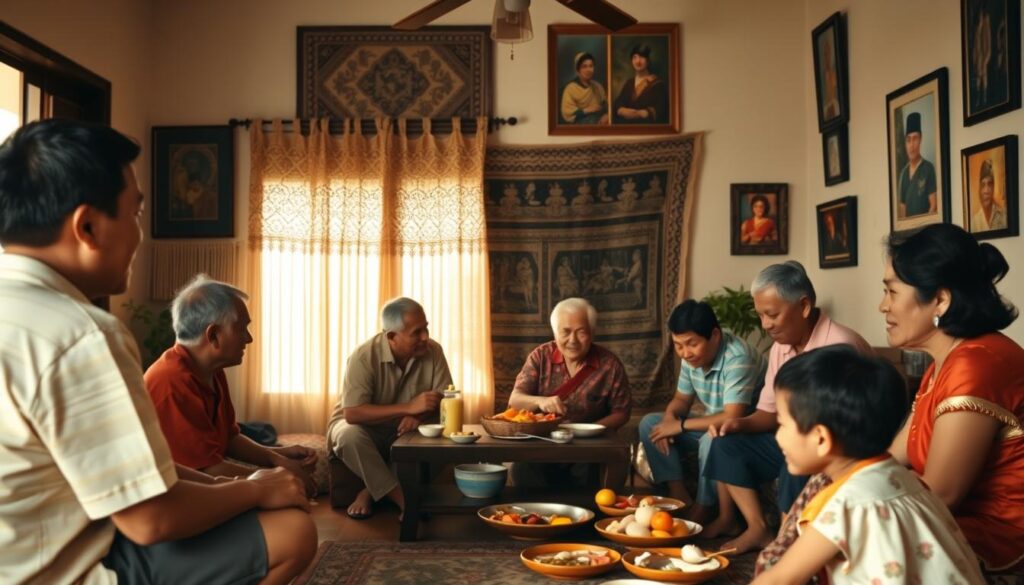
Traditional Family Bonds and Kinship
Early filipino families rarely functioned as isolated units. Distant cousins, godparents, and even neighbors were considered kapamilya—integral to daily life. A 19th-century proverb captures this spirit:
“A home without kin is like a forest without trees.”
Three-generation households became common, with grandparents teaching traditions through oral storytelling. This created a family structure where elders held authority, while younger members contributed labor or income. Responsibilities like childcare and farming were distributed across the group.
| Traditional Practice | Purpose | Modern Adaptation |
|---|---|---|
| Shared harvests | Economic stability | Pooled funds for education |
| Elder-led councils | Conflict resolution | Group video calls for decisions |
| Community childcare | Social cohesion | Rotating babysitting schedules |
Historical Norms and Social Values
Utang na loob (debt of gratitude) shaped interactions between family members. Helping a cousin find work or shelter wasn’t optional—it strengthened communal ties. Younger generations showed respect through gestures like pagmamano, gently pressing an elder’s hand to one’s forehead.
These values survived colonization and urbanization. Today, 83% of filipino families still consult elders about major decisions, proving that historical norms adapt rather than disappear. As one sociologist notes: “Their strength lies in flexibility, not rigidity.”
Modernization and Changing Family Landscapes
As Philippine cities expand, traditional family setups face new pressures. Migration to urban areas has led smaller households to form, yet many still rely on relatives for childcare or financial help. This blend of old and new creates a unique social fabric where modern careers coexist with time-honored obligations.
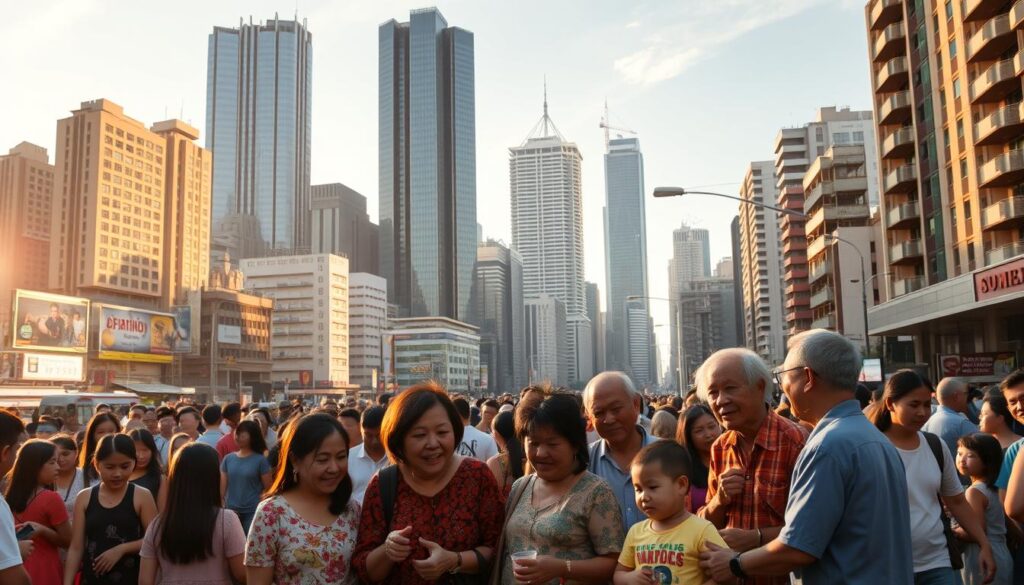
Urbanization and the Nuclear Influence
Nearly 53% of Filipinos now live in cities, according to recent data. Smaller apartments and demanding jobs make multi-generational living harder. Yet, parents often send children to grandparents during school breaks, keeping ties strong despite distance.
Roles within families are shifting. Younger members prioritize careers, while elders adapt by managing budgets or mentoring through video calls. One Manila resident shares:
“We video-chat my lola (grandmother) every Sunday—she still guides us, just digitally.”
| Traditional Practice | Urban Adaptation | Impact |
|---|---|---|
| Shared meals daily | Weekly family Zoom dinners | Maintains connection |
| Elders lead decisions | Collaborative budgeting apps | Balances authority |
| Neighborhood childcare | Paid daycare + weekend visits | Mixed support system |
Values now balance individuality and unity. A nurse in Cebu explains: “I work overseas, but send money home—it’s my role now.” This structure lets families honor traditions while embracing modern needs.
Challenges like generational gaps emerge, yet benefits include financial flexibility. The key lies in adapting without losing cultural roots—a tightrope walk defining today’s Filipino households.
Extended Family Dynamics in Modern Filipino Homes
Nearly 1 in 3 Philippine households today includes grandparents, adult children, and grandchildren sharing one roof. This arrangement creates a unique rhythm of daily life where generational bonds shape everything from meal prep to financial planning.
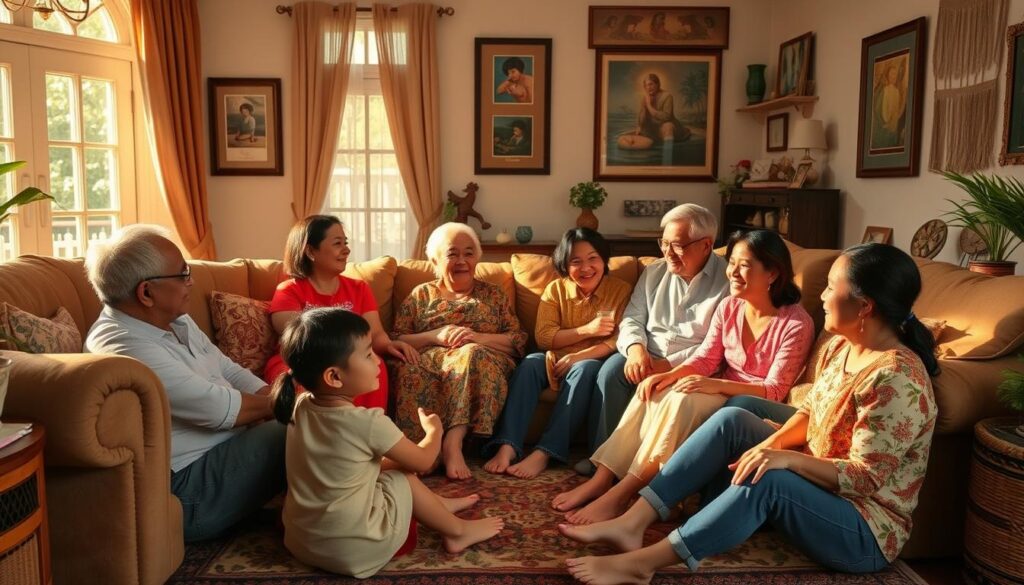
Multigenerational Coresidence Trends
The Cebu Longitudinal Study reveals 93% of grandparents actively care for grandchildren. Younger parents often work urban jobs while elders manage homes. This exchange of roles strengthens the family unit through shared responsibilities.
Three patterns define modern living arrangements:
- Working parents rely on elders for childcare
- Young adults contribute wages to household funds
- Teens learn traditions through daily interactions
Impact on Psychological and Social Well-Being
Regular contact across age groups fosters emotional support. A 2023 study participant noted:
“My lolo’s stories help my kids understand our roots.”
However, tight-knit living brings challenges. Some adults report stress when balancing elder care with personal needs. Researchers found:
| Benefit | Challenge |
|---|---|
| Shared expenses | Limited privacy |
| Cultural continuity | Role conflicts |
| Emergency readiness | Caregiver fatigue |
Most households navigate these tensions through open communication. The key lies in valuing collective strength while respecting individual growth within the family unit. As roles evolve, so do the bonds that make these arrangements endure.
Gender Roles and Power Shifts in Filipino Households
Filipino households often reveal a fascinating balance of authority between genders. While fathers traditionally hold symbolic roles as haligi ng tahanan (pillars of the home), mothers frequently manage budgets and major decisions. This duality reflects historical roots in pre-colonial matrilineal practices, where women inherited property and led community rituals.
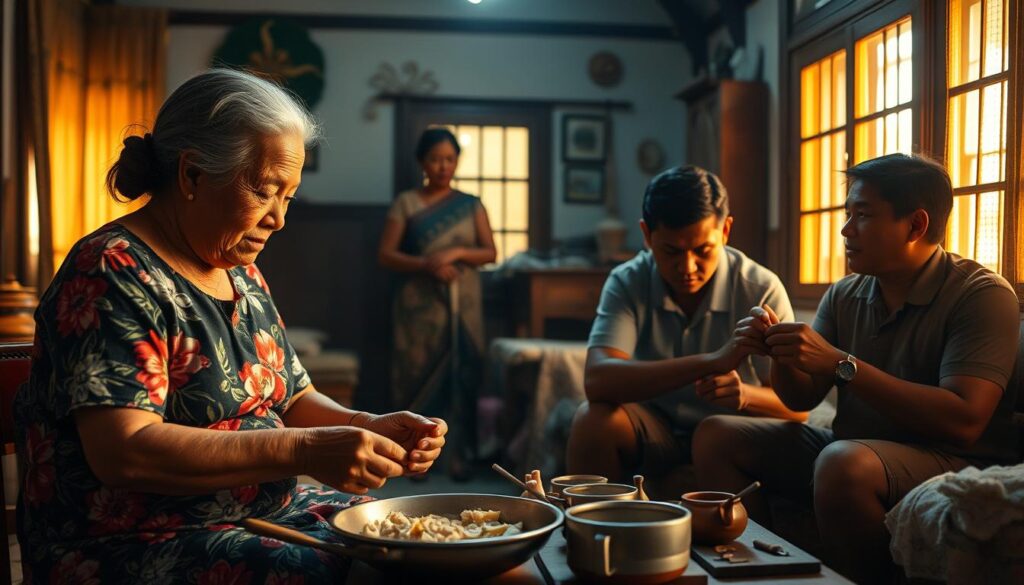
Patriarchal vs. Matriarchal Influences
Modern filipino family structures blend old and new power dynamics. Grandmothers often oversee savings and childcare, while younger mothers increasingly work abroad as primary earners. A 2022 study found 68% of transnational households rely on women to coordinate remittances and education plans.
| Role | Traditional Expectation | Modern Practice | Impact |
|---|---|---|---|
| Fathers | Primary breadwinner | Share childcare duties | Stronger parent-child bonds |
| Mothers | Home management | Overseas employment | Financial independence |
| Eldest daughters | Assist with chores | Manage digital budgets | Tech-driven responsibility shifts |
These changes spark creative adaptations within filipino homes. One Manila mother notes:
“My husband now cooks while I video-call our kids from Dubai—we’ve rewritten the rules together.”
Despite progress, 47% of families still consult elders on major choices, showing how tradition anchors evolution. Younger couples often divide tasks among family members based on skills rather than gender—a quiet revolution reshaping filipino society from the kitchen table upward.
Intergenerational Support and Caregiving Traditions
The heartbeat of Filipino households lies in mutual care across age groups. This system thrives on respect and practical support, binding generations through shared responsibilities.
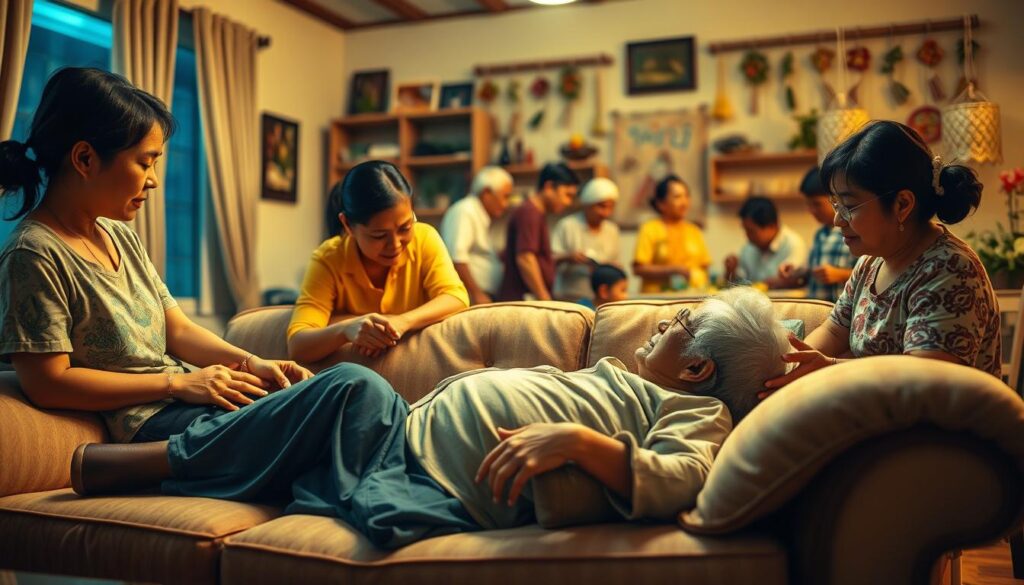
Filial Piety and Respect for Elders
Filial piety shapes daily life, where caring for parents and elders is both duty and honor. Less than 1% of older adults live in institutions—families instead provide hands-on support. A 2023 study participant shared:
“We bathe my lola (grandmother) with the same patience she showed us as children.”
Three key expectations guide this tradition:
- Adult children prioritize elders’ medical needs
- Younger individuals assist with daily tasks
- Family decisions require elder approval
Reciprocal Care Among Family Members
Support flows both ways in these networks. Grandparents often become primary caregivers while parents work abroad. The indigenous Sikolohiyang Pilipino framework highlights how knowledge transfers across generations through this exchange.
| Role | Contribution | Benefit |
|---|---|---|
| Teens | Tech assistance | Learn cultural values |
| Middle-aged | Financial support | Childcare assistance |
| Elders | Wisdom sharing | Emotional security |
This reciprocity strengthens bonds while adapting to modern life. As individuals of every age participate, families maintain unity through changing times.
Socioeconomic Influences on Family Structure Transitions
Economic forces are reshaping how Filipino families organize their lives across borders. With 11% of the population working overseas, household unit compositions now stretch from Manila to Dubai. Nearly 9 million children grow up separated from parents, relying on video calls and remittances to sustain bonds.
Effects of Migration and Transnational Families
Labor migration drives significant changes in family roles. Eldest daughters often become surrogate parents, managing siblings and budgets. One study participant shared:
“I send half my salary home—it’s how we pay for my brother’s nursing school.”
Three key shifts define these dynamics:
- Remittances fund 63% of college tuition fees nationwide
- Grandparents replace parents in daily childcare
- Family decisions occur across multiple time zones
| Traditional Practice | Modern Adaptation |
|---|---|
| Parent-led households | Teens managing digital remittances |
| Local job markets | Global employment opportunities |
Education now serves as both motivation and outcome. Families prioritize schooling to secure higher-paying jobs abroad, creating a cycle where time-apart fuels future stability. Despite distances, 78% of transnational families report strong emotional ties through weekly video rituals.
These adaptations show how economic pressures reshape dynamics without erasing cultural roots. As roles evolve, the family unit remains the anchor through every change.
Challenges and Resilience in Extended Filipino Families
When cousins share a roof with grandparents and in-laws, everyday life becomes a dance of compromise. Differing opinions on finances, childcare, and household duties often spark friction. External influence from global trends adds pressure, as younger generations adopt new ideas that clash with elders’ expectations.
Navigating Role Shifts and Tensions
Common challenges include disputes over caregiving duties and money management. A 2024 study found 41% of overseas workers’ relatives report stress when balancing remittances with local needs. One mother in Quezon City shared:
“We argue about my sister’s spending, but weekly family meetings help us listen better.”
| Conflict Source | Resolution Strategy | Outcome |
|---|---|---|
| Elders resisting tech use | Teens teach digital skills | Improved communication |
| Job relocation debates | Pro/con lists with grandparents | Shared decision-making |
| Childcare disagreements | Rotating responsibility charts | Fair workload distribution |
Building a unified sense of purpose proves vital. Families that host monthly “story nights” strengthen bonds through shared memories. Open dialogues about shifting roles foster understanding, helping relatives adapt without resentment.
Successful households often blend tradition with innovation. A Cebu family now uses group chats to include overseas members in choices—a modern twist on collective decision-making. By valuing empathy over pride, they turn challenges into opportunities for growth.
Conclusion
The strength of Philippine communities lies in their ability to evolve while preserving core values. Despite urban growth and global influences, households remain anchored by collective responsibility. Every member—from teens managing digital remittances to elders preserving oral histories—strengthens this living foundation.
Modern pressures have reshaped living arrangements, yet 70% of families maintain intergenerational bonds through creative solutions. Shared childcare, collaborative budgeting apps, and transnational video rituals prove tradition adapts rather than fades. These strategies ensure cultural continuity while addressing today’s needs.
Respect remains central to this balance. Concepts like utang na loob (debt of gratitude) foster unity across generations, ensuring elders guide decisions while younger members innovate. Such mutual support cements families as the bedrock of society.
Looking ahead, understanding these adaptable households can shape policies on childcare, elderly care, and migrant worker support. By honoring their role as society’s foundation, Filipino families model resilience that transcends borders and generations.



